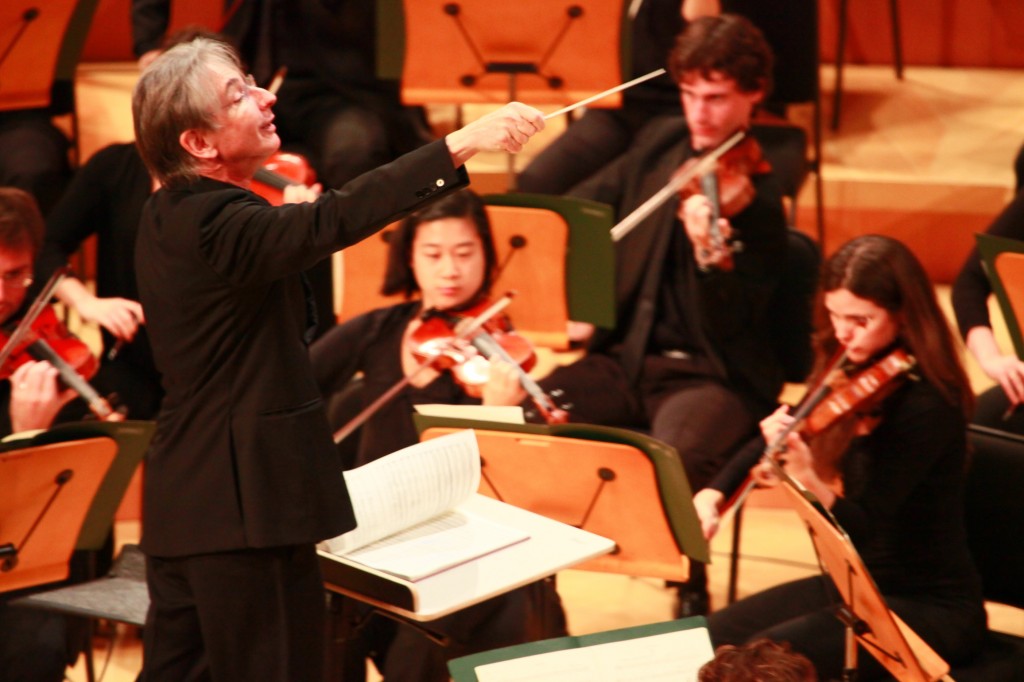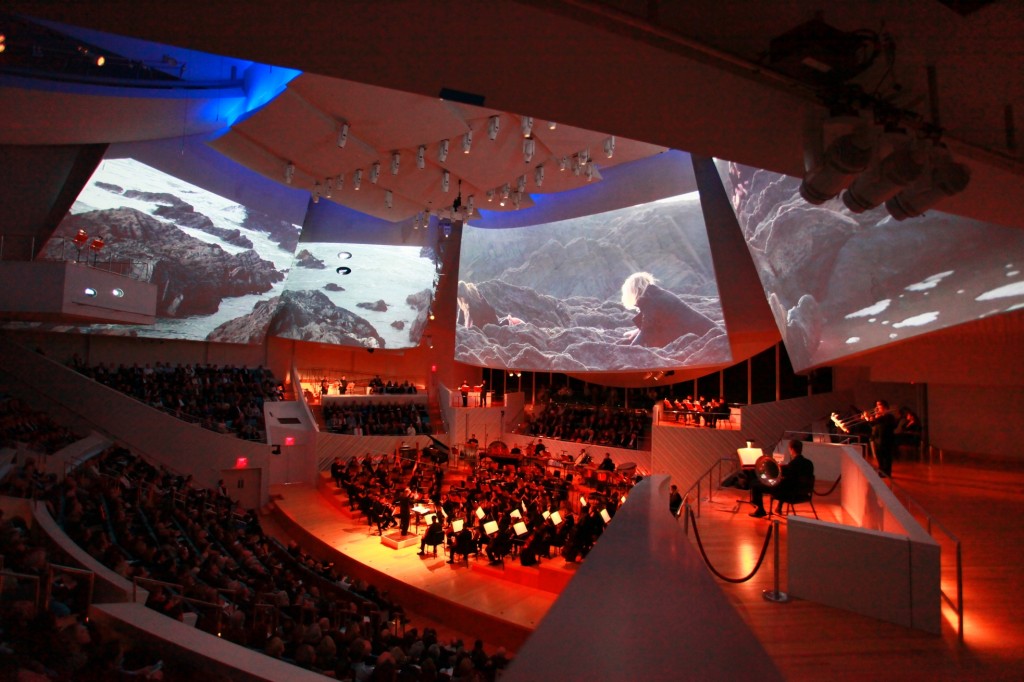The New World Symphony opens its new multimedia home

Michael Tilson Thomas led the inaugural concert of New World Center Wednesday night. Photo: Rui Dias-Adios
The rousing, storm-tossed opening notes of Wagner’s Flying Dutchman Overture rang out Wednesday from the stage of the New World Symphony’s futuristic new home in Miami Beach, opening a facility that will attempt to revolutionize the way classical music performances are presented
Founder and artistic director Michael Tilson Thomas walked out the stage of the gleaming new hall to a long round of applause from an audience in steeply stacked stadium seats that surround the stage. Rather than giving a windy speech of welcome, Tilson Thomas allowed Wagner to have the first word, raising his baton and calling forth the work’s fortissimo opening notes in a fitting inauguration for the new hall.
The orchestra sounded edgy and excited, with extra bite in the violins and a couple of ragged entrances in the winds. But the playing was committed and energetic. And the hall’s sound was big, rich and resonant, although a lot of the inner voices seemed to get lost, like the rapid, sweeping notes of the violins under the chords of the brass. Tilson Thomas said last week that the orchestra is still adjusting the hall’s acoustics.
Tilson Thomas, who looked exultant throughout the performance, chose a program balanced between the past and present of classical music, with a popular Romantic overture, a classic post-war American symphony and a new work. The concert took place before an audience that included music critics and orchestra executive directors from around the United States. Before the performance, people sipped drinks in the six-story atrium, a contemporary space built around a glass bar lit in blue light.
After the Wagner overture came the world premiere of Polaris: Voyage for Orchestra by the highly regarded young British composer Thomas Adès. The work was presented with an accompanying film by video artist Tal Rosner, both music and video commissioned by the New World Symphony and several other orchestras.

Photo: Rui Dias-Adios
Polaris proved an intense and hypnotic experience, with the video complementing the music without being so busy that it distracted. As repetitive patterns in the orchestra gained intensity and force, the hall’s five curved projection screens displayed images of waves crashing on rocks and two women walking along the shore. The music intensified as more instruments joined in, with sudden breaks in the music matched by changes in the video. The work built to a grand climax and the images vanished, replaced by bubble-like circles.
The visual experience of the performance was different from that to which most classical audiences may be accustomed. The hall is distinctly vertical, with the audience placed not only in front but all around the orchestra. And with the use of risers to give the orchestra itself five levels of seating, it was possible to see the faces of the bassoon players, second violinists and many more musicians, making the ensemble seem less remote from the audience than in traditional concert halls.
In the Symphony No. 3 by Aaron Copland, the orchestra’s various timbres came through more clearly than in the Wagner, possibly because Copland’s orchestration was more transparent. The long string passages of the third movement, opening with thin violin sounds at the instrument’s upper register, built to a magnificent climax, with all the strings coming through with clarity and power. The last movement, built around Copland’s familiar Fanfare for the Common Man, called forth resonant, weighted playing from the brass, with firm support in the basses.
The $160 million hall was financed by the City of Miami Beach, Miami-Dade County and private contributions. The city also paid for the parking garage and the new park from which people will be able to watch concerts and films on a 7,000-square-foot outdoor projection wall.
Over the next few days, the orchestra will play more concerts exploring what the hall can do. On Thursday they plan a tour-de-force Schubert cycle that will use the hall’s multiple stages to swiftly move from symphonic to chamber to vocal works. And Sunday they will give two free concerts of Mussorgsky’s Pictures at an Exhibition, accompanied by short movies made by film students at the University of Southern California. Future events will include inexpensive mini-concerts designed to draw casual strollers from the adjacent Lincoln Road dining and shopping district.
The New World Symphony continues its first week of performances at 7 p.m. Thursday with A Schubert Journey, which will be simultaneously projected on the outdoor viewing wall. The opening night concert will be repeated at 7:30 p.m. Friday. nws.edu; 305-673-3331.